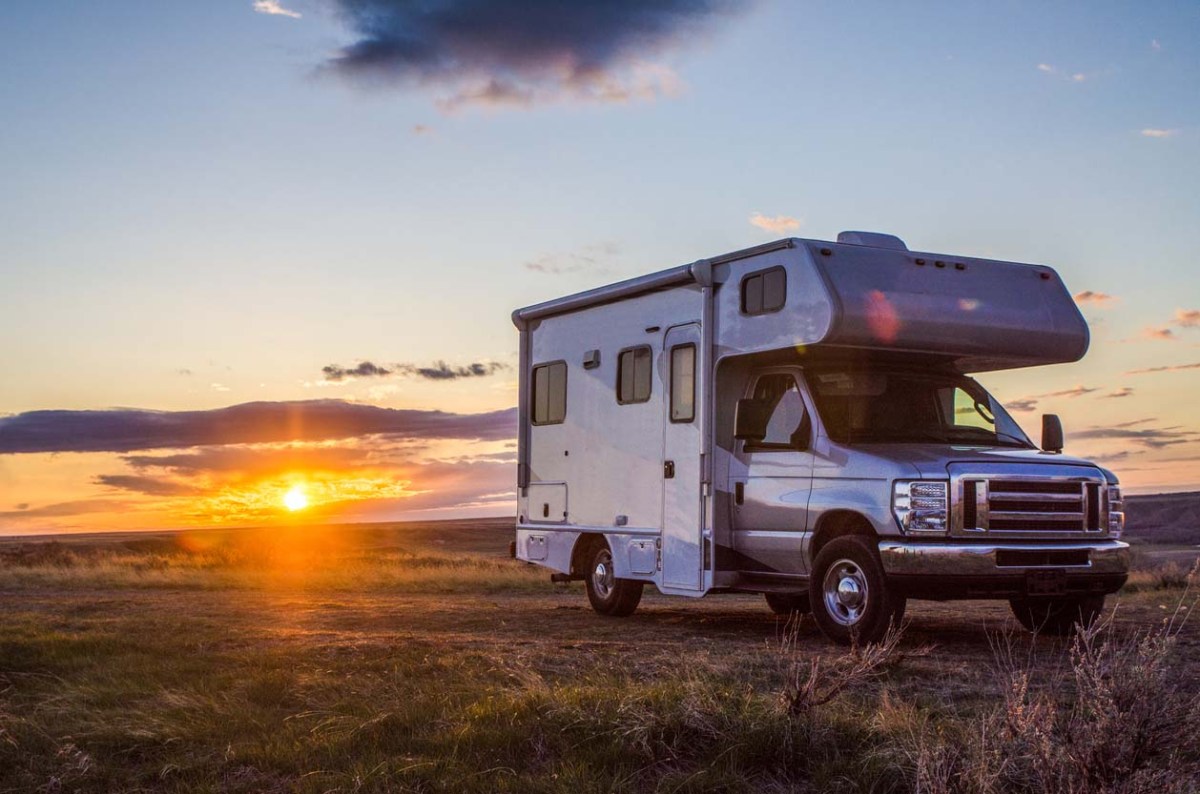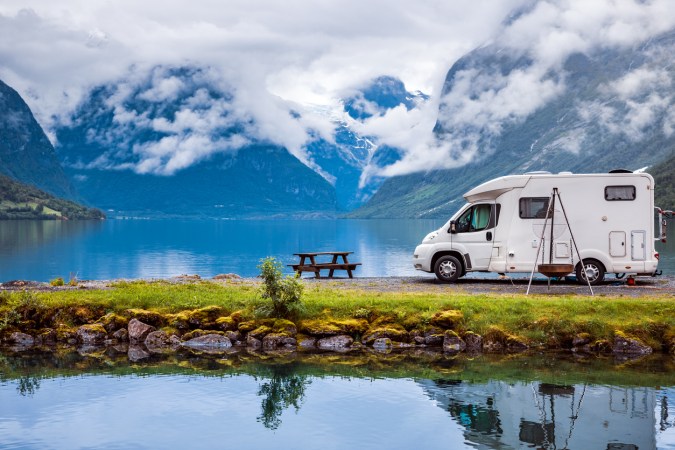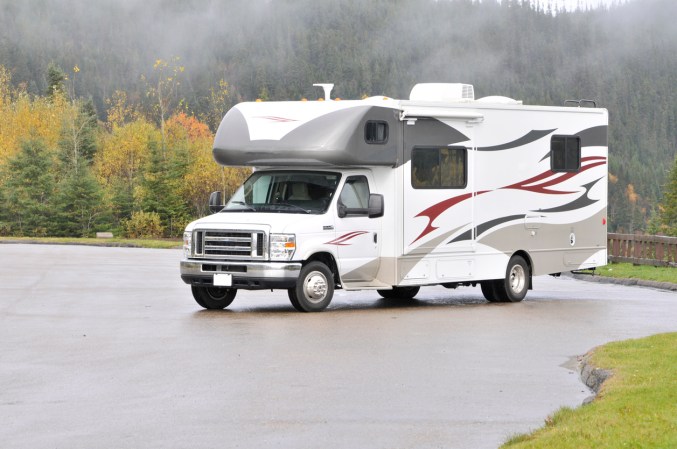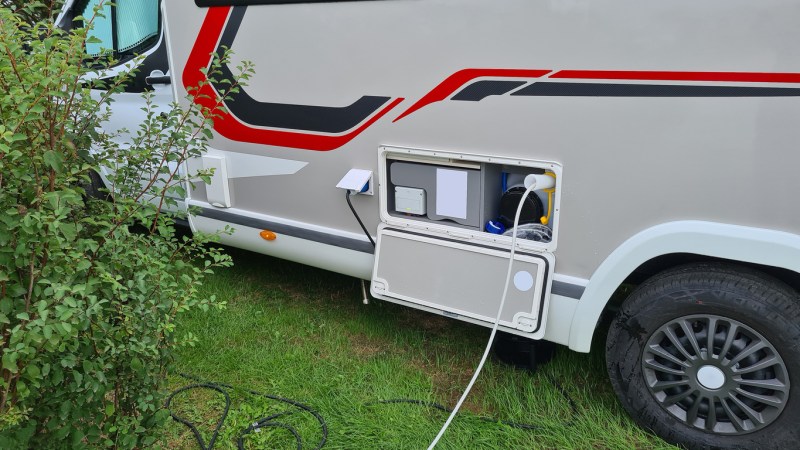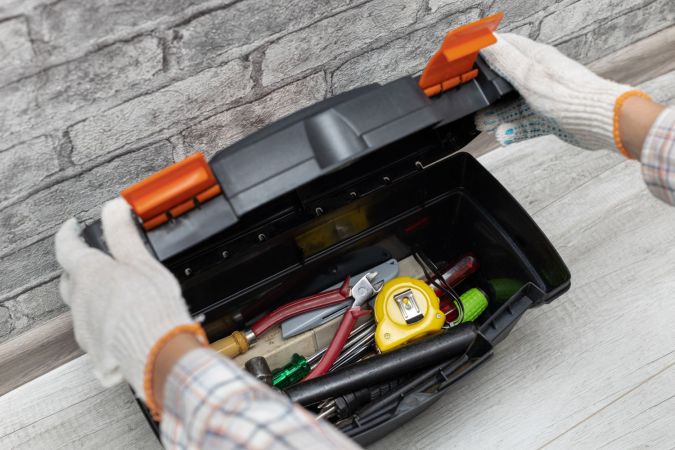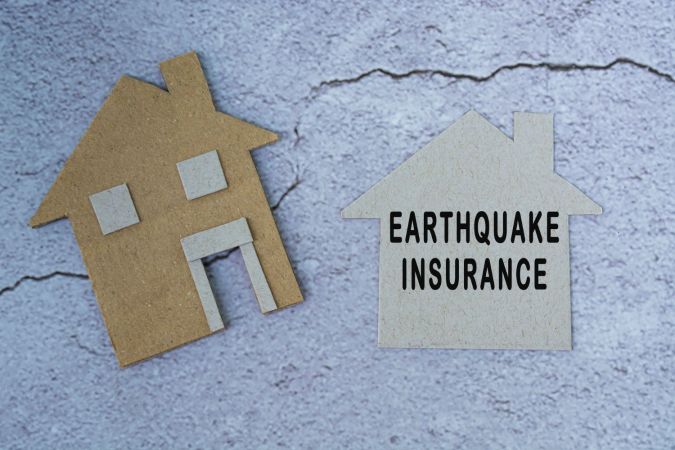We may earn revenue from the products available on this page and participate in affiliate programs. Learn More ›
Highlights
- The national average cost for RV insurance is $848, though it could be more or less depending on the types of coverage an RV owner chooses.
- There are several factors that can affect RV insurance cost, including the type and age of the RV, the type and amount of coverage, the policyholder’s driving experience and record, and the deductible amount.
- Liability insurance is required by law in all states, and lenders will require RV owners to carry comprehensive and collision insurance if they have a loan or lease on the vehicle.
RV ownership can be a rewarding experience, allowing owners to pack up and set off on adventures both near and far. While some RV owners use their motorhomes to take occasional camping trips, others embrace full-time RV life. One thing that all RV drivers have in common is the need for insurance coverage to help protect their financial investment. But how much is RV insurance, and how much coverage do drivers really need?
According to Progressive, the average RV insurance policy costs $848 per year. A customer’s RV insurance rate will be lower if they opt to carry only the minimum amount of liability insurance required by law. The exact cost depends on several factors, all of which will be explored in this guide, along with explanations of the different types of RV insurance coverage, the reasons RV owners need insurance, tips on saving money on coverage, and questions to ask a potential insurance provider.
- See the best RV insurance companies
Factors in Calculating RV Insurance Cost
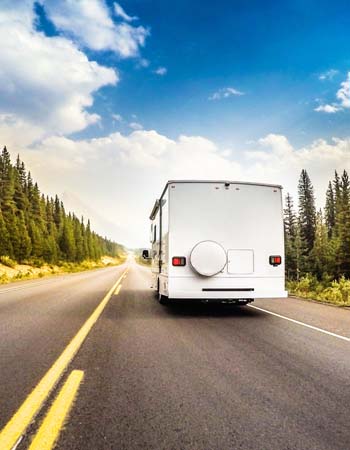
As with any type of insurance, there are several factors that go into the calculation of RV insurance cost. When shopping for RV coverage, drivers will want to make sure they fully understand the factors that can impact their total cost of coverage. Some of the main factors include the type, age, and condition of the RV; the number of miles driven annually; the type and amount of coverage chosen; the policyholder’s geographic location, driving record, claims history, and credit score; the deductible on the policy; the reimbursement method; and the owner’s travel plans.
RV Type or Class
There are several types, or classes, of RV, and some can cost more to insure than others. A class A motorhome is the largest and most expensive to purchase and insure. These RVs have sturdy (and heavy) frames that are typically the same as the ones used for a bus or a commercial truck. Class A motorhomes typically have enough space for eight people to sleep and often have higher-end fixtures and additions. Class B motorhomes are often known by the term “camper vans” and can sleep up to four people. They usually have only the most basic amenities, making them cheaper to purchase, run, and insure. Finally, class C motorhomes are midsize RVs that can generally fit up to six people and often have a sleeping compartment above the cab.
RV Age and Condition
It typically costs less to insure an older RV than it does to insure a newer RV. Similarly, it’ll be more expensive to insure an RV with numerous customizations, such as those that have amenities like the best RV mattresses and even the best RV sewer hoses. A newer RV that’s in good condition will have a higher insurance premium than an older and more basic model that’s showing signs of wear. However, RVs in bad condition that require frequent maintenance can be more costly to insure since they pose a greater risk that the owner will make a claim.
RV Usage and Mileage
While some people live in their RVs, others only use them occasionally for family camping trips. The amount of usage an RV gets will also have an impact on the average cost of RV insurance. Drivers who use their RV infrequently may be able to get cheaper coverage when getting an RV quote if they report the approximate number of days they use their RV per year. But those who live the full-time van life may need to purchase additional coverage to replace the types of coverage they would typically get with a homeowners insurance policy (such as personal liability, medical payments, and loss assessment coverage). Additionally, an RV owner who lives in their vehicle full-time will have higher personal property coverage limits, and will therefore pay more for this type of coverage.
Similarly, those who rack up more miles on their RV by frequently taking it on long road trips will likely pay more for RV insurance coverage than an RV owner who mostly goes on local camping trips and has relatively low annual mileage.
Coverage Type
When it comes to RV insurance, there are several types of coverage drivers can select. Liability insurance is mandatory for any vehicle that will be driven on a road, and drivers with an auto loan on their RV will likely be required to carry comprehensive and collision coverage on their vehicle. Other types of coverage include uninsured or underinsured motorist, medical payments, roadside assistance, vacation liability, and safety glass replacement. Each type of coverage is described in more detail in a section below.
Coverage Amount
In addition to the type of coverage chosen, the amount of coverage will have an effect on the total cost of RV insurance. The required amount of liability coverage varies by state, so it’s important for an RV owner to check with their local department of motor vehicles to ensure they have adequate coverage to comply with state law. The higher the coverage limit for liability and other types of coverage, the higher premium the policyholder will likely pay, but the better protected they’ll be in the event of a claim.
Geographic Location
The exact cost of RV insurance can depend on the policyholder’s geographic location. Costs can differ depending on the state and even among ZIP codes within the same state. Drivers who live in areas at high risk for theft or extreme weather will likely pay a higher premium than those who live in low-risk areas.
Driving Experience and Record
Long-time RV owners may be able to get a lower premium on their RV insurance policy because they have shown they are capable of driving this type of vehicle. Novice RV drivers may pay more, even if they have been driving for many years, simply because it’s a very different experience driving a large and cumbersome motorhome than driving a midsize sedan or even a full-size truck. Additionally, RV insurance companies will consider the policyholder’s driving record when pricing out a policy. A driver with a clean record will typically pay less than a driver with a history of car accidents or tickets on their record.
Claims History
RV insurance providers will also check a driver’s claims history when determining a policy premium. Although insurance is designed to help pay for damage caused by covered events and drivers will certainly need to file a claim when necessary, too many claims suggests that a driver is a higher risk on the road. An insurance company is a business, and a claim costs the insurer money. Therefore, that cost is passed on to the driver in the form of higher premiums.
Credit Score
Although some states (including California, Hawaii, Maryland, Massachusetts, Oregon, Utah, and Washington) prohibit insurers from using a customer’s credit score as a factor when determining their insurance costs, the majority of states have no such law. In these states, the insurance provider may check the customer’s credit before giving them an insurance quote. A customer with a “good” or “excellent” credit score will likely pay less in RV insurance premiums than a customer with a “fair” or “poor” credit score.
Deductible
An insurance deductible is the share of a claim that a policyholder is responsible for paying. In general, the higher the deductible, the lower the insurance premiums and vice versa. Both options have their pros and cons, so customers will want to carefully consider the deductible amount they are comfortable with before taking out an RV insurance policy.
There is never a deductible for liability coverage. However, other types of coverage, such as comprehensive or collision, will likely come with a deductible. If the driver has a $500 deductible on their comprehensive coverage and files a claim for $2,000 to repair a hail-damaged roof, the insurer will pay the policyholder $1,500.
Reimbursement Model
When choosing an RV insurance policy, customers may have the option to specify a reimbursement model.
- Actual cash value coverage will cover the RV based on its depreciated value. If a policyholder’s RV is totaled and has a resale value before the accident of $20,000, that will be the amount the driver receives to replace their RV (less the deductible). But it may cost $30,000 to purchase an RV with similar specifications, meaning the policyholder will either need to settle for a lower-grade model or pay partially out of pocket to buy a new RV. However, they will pay a lower premium in exchange.
- Agreed value coverage will cover the RV based on a value agreed upon by the policyholder and the insurer at the beginning of the policy. Using this method, the policyholder will likely receive a higher payout to replace their RV if it’s totaled, but in exchange they will pay a higher premium.
- Total loss replacement coverage will cover the cost to replace the RV with the exact same model, or the model closest to it that’s for sale in the current market. Like agreed value coverage, a policy with total loss replacement coverage will cost the policyholder more for their premium, but in the event their RV needs to be replaced, they’ll have more money to work with.
Travel Plans
If an RV owner plans on driving their motorhome out of the country, they’ll want to let their insurance provider know. Although some RV insurance policies will cover drivers in Canada, most will not cover drivers if they take a camping trip to Mexico. Taking out additional coverage for trips to other countries will increase the policyholder’s insurance premiums, but it’ll be worth the added expense to know their coverage will extend while they are traveling outside of the United States.
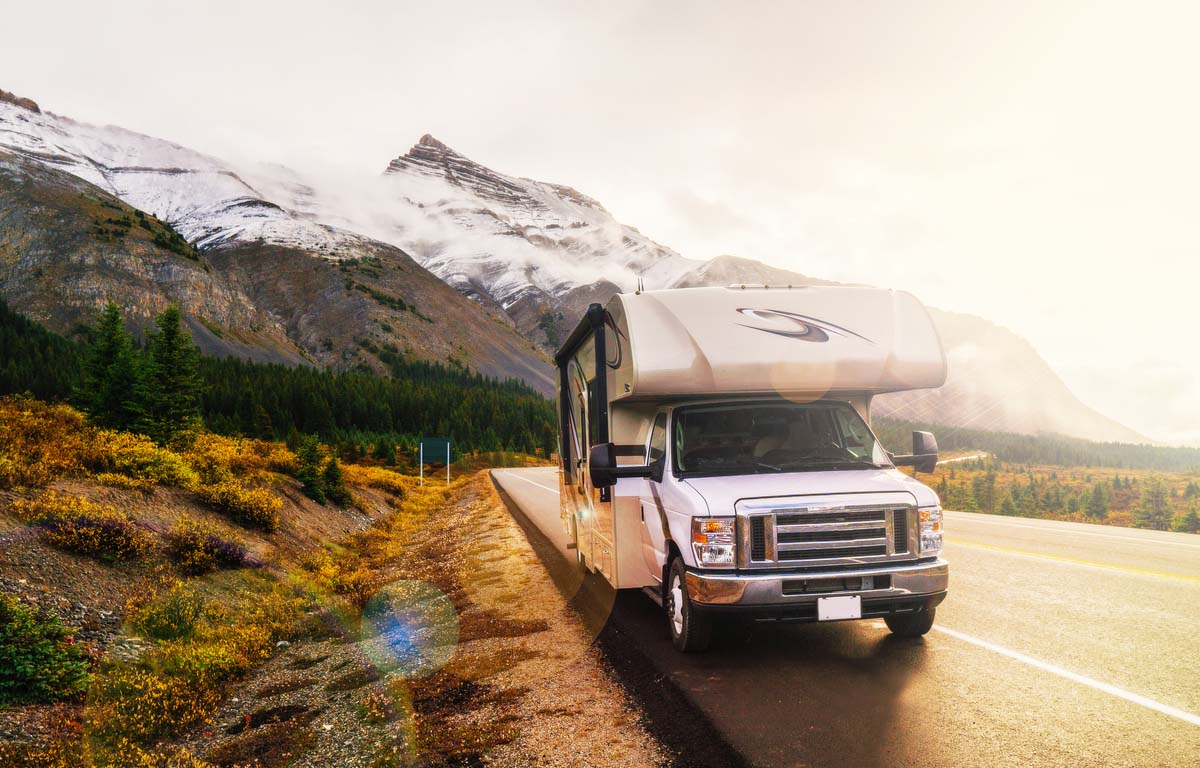
Types of RV Insurance Coverage
When taking out an RV insurance policy, drivers will need to understand what RV insurance covers to determine the type of coverage they require. Common types of RV insurance coverage include liability, comprehensive, and collision, but there are several other types of coverage that RV owners may want to consider in order to more fully protect their investment.
Liability
If the RV will be driven on the road, the owner will be required by law to have liability coverage. The exact amount of coverage required depends on the state in which the policyholder lives. There are two types of liability coverage for RV insurance: bodily injury liability insurance (BI) and property damage liability insurance (PD).
- Bodily injury liability insurance is required in all states except Florida. This type of coverage protects the policyholder if they are responsible for an accident that causes bodily harm or death to a third party.
- Property damage liability insurance is required in all 50 states and Washington, D.C. This type of coverage protects the policyholder if they are liable for causing damage to someone else’s vehicle or property.
The exact amount of liability insurance required by law varies from state to state, so RV owners will want to check their state’s requirements to ensure they have adequate coverage. State minimum requirements are often quite low and are unlikely to fully cover the cost to replace a vehicle in the event a driver is found legally responsible for causing an accident. Therefore, RV owners will typically want to take out a policy with a limit higher than the state required minimum amount. The following are some examples of liability insurance requirements in several states.
| State | Minimum BI Requirement | Minimum PD Requirement |
| California | $15,000 per person/$30,000 per accident | $5,000 per accident |
| Georgia | $25,000 per person/$50,000 per accident | $25,000 per accident |
| Maine | $50,000 per person/$100,000 per accident | $25,000 per accident |
| New Jersey | $25,000 per person/$50,000 per accident | $5,000 per accident |
| Texas | $30,000 per person/$60,000 per accident | $25,000 per accident |
| Utah | $25,000 per person/$65,000 per accident | $15,000 per accident |
| Virginia | $30,000 per person/$60,000 per accident | $20,000 per accident |
| Washington | $25,000 per person/$50,000 per accident | $10,000 per accident |
Comprehensive
Comprehensive coverage is designed to financially protect the RV owner against the cost to repair damage caused by events such as fire, vandalism, or weather. For example, if an RV is caught in a heavy hailstorm and sustains a hail-damaged roof as a result, comprehensive coverage will help pay to repair it. Comprehensive RV insurance may also cover water damage if it’s caused by a covered event. It’s important to note that comprehensive coverage will have a deductible that the policyholder will be required to pay as part of the claim. Although comprehensive coverage is not mandatory, lenders will likely require borrowers to carry it.
Collision
Collision coverage helps pay to repair damage caused by a collision, regardless of who is at fault. This applies to collisions with other vehicles, as well as collisions with objects, such as a tree or a wall. Although collision coverage is not required by law in any state, it will likely be mandatory if the RV owner has an existing loan or lease on their vehicle. If a policyholder makes a claim under their collision coverage, they will be required to pay a portion of the claim amount in the form of a deductible. It’s important for RV owners to note that the at-fault driver’s liability insurance will pay for repairs, so if the other driver is liable for a collision it’s better for the RV owner to work with them to file a claim through their insurance to avoid paying a deductible.
Uninsured or Underinsured Motorist
Under ideal circumstances, a driver’s liability coverage will help pay for property damage and medical expenses to a third party if they’re at fault for an accident. But what if that driver doesn’t carry liability insurance or they only carry the state-required minimum, which often doesn’t provide enough coverage? Even though it’s required by law for motorists to have a certain amount of liability coverage, a 2022 study by the Insurance Information Institute (III) found that 12.6 percent of drivers were uninsured in 2019.
Uninsured or underinsured motorist coverage is designed to help protect RV owners if they’re involved in an accident with an uninsured (or underinsured) driver. It can also help cover expenses if the at-fault driver’s liability coverage is not sufficient to pay for the RV owner’s property damage or medical expenses. This is optional coverage, but it can help protect RV owners in case they’re involved in an accident with one of those 12.6 percent of uninsured drivers.
Medical Payments (MedPay)
MedPay is another optional type of coverage that can help pay for the policyholder’s medical expenses and those of their passengers if they are injured in a motor vehicle accident. Although health insurance can help pay for these expenses, policyholders risk paying large medical bills out of pocket if they have a high deductible or require medical care that isn’t covered by their health plan. MedPay coverage can help fill the gap. This type of coverage applies no matter who is at fault. If a driver uses this coverage to help pay their medical bills, their health insurance would be a secondary form of coverage and would only apply once the coverage limits on auto insurance have been exhaused.
Personal Injury Protection (PIP)
PIP coverage is similar to MedPay in that it can help pay for the medical expenses of the driver and passengers if they’re injured in an accident, regardless of fault. But PIP coverage can also cover any lost wages if the injury requires the driver or passengers to take time off work to recover.
Roadside Assistance
Some insurance providers offer roadside assistance as an optional coverage. This helps protect RV owners if their vehicle breaks down while they’re on the road. Roadside assistance typically covers things like tire repair, fuel delivery, jump-starting, on-site repairs, towing, and unlocking the RV if the driver is locked out.
Vacation Liability
Typical RV liability insurance policies don’t cover an RV when it’s parked while the driver is on vacation. Vacation liability insurance helps fill the gap and helps protect the RV owner if the vehicle causes damage to property or injury to a third party while it‘s parked at a campsite.
Safety Glass Replacement
Safety glass replacement coverage helps pay to repair or replace a cracked or broken windshield. This is not typically covered by an RV insurance policy and can be an expensive out-of-pocket repair.
Do I Need RV Insurance?
There are many things about owning an RV that new owners may not be aware of, and they may wonder if they even need RV insurance, especially if they are careful and defensive drivers. But even the most careful drivers can be involved in an accident if another driver isn’t paying attention or if a deer darts in front of them. There are several reasons it’s a good idea for RV owners to carry insurance coverage, including state or lender requirements, covering a rental RV, and general peace of mind.
State Requirements
All U.S. states require drivers to insure any vehicle that will drive on a public road, though the only type of coverage required by law is liability coverage. All 50 states and Washington, D.C. require RV owners to carry property damage liability coverage, and all states except Florida also require drivers to have bodily injury liability insurance. Failure to carry the state minimum- required insurance can result in license suspension, penalties and fees, and even potential jail time for repeat offenders. RV owners can check with their state’s department of motor vehicles to find out the minimum legal requirements for liability insurance.
Lender Requirements
Although comprehensive and collision insurance aren’t required by law for RVs, most lenders will require borrowers to carry this type of coverage if they have a loan or lease with them. This protects the lender’s investment and decreases the risk that they will lose money if the vehicle sustains damage from a covered event. RV owners will want to check their lender’s requirements to determine how high a deductible an insured borrower can carry.
Rental RVs
A driver who chooses to rent an RV for a vacation rather than buy one will need to have insurance coverage. The driver is responsible for the RV while it’s in their possession, which means they will need to pay out of pocket for any damage that occurs in that time if they don’t have insurance coverage. Drivers will want to check with their auto insurance provider to see whether their current auto policy will also cover their rental RV, or they may want to check with their credit card provider to see if the vehicle will be covered if they used the credit card to pay for the rental. If not, they will want to purchase a short-term insurance policy to make sure the RV is covered during the rental period, either with their own insurance provider or through the company from whom they are renting the RV.
Peace of Mind
Like any type of insurance coverage, RV insurance is worth the cost simply for the peace of mind it provides to RV owners. An RV is an expensive investment, and without insurance, the owner risks losing a lot of money if they are involved in an accident while they’re on the road or if the RV sustains damage while it’s parked as a result of a weather-related event, theft, or vandalism. Having coverage can also help ease their mind that they can prove they are legally insured if they happen to be pulled over by a law enforcement officer while on the road.
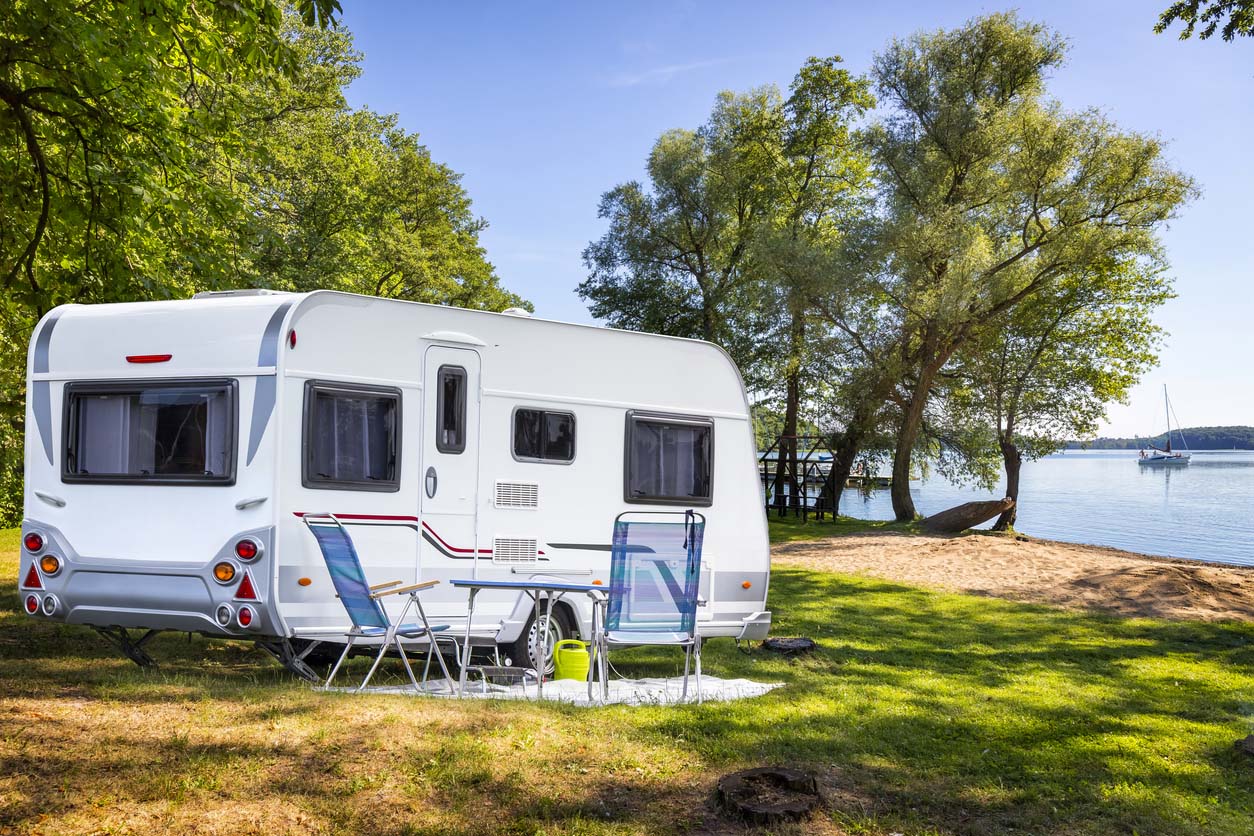
How to Save Money on RV Insurance Cost
Although necessary, RV insurance is an additional expense for RV owners to absorb in order to protect their assets. One way to get cheap RV insurance is to opt for the minimum coverage required by law; however, this can leave you unprotected. The following tips can help decrease RV insurance rates.
- Bundle your policies. Insurance providers offering some of the best home and auto insurance bundles may also allow you to bundle your RV insurance policy for extra savings.
- Ask about discounts. Most insurance companies offer discounts to help policyholders save on their insurance premiums. You might be able to get a discount by remaining claim-free, being the RV’s original owner, or being a responsible driver.
- Shop around. Get quotes from at least three different RV insurance providers to compare rates and coverage.
- Pay annually. You may be able to save money by paying your annual RV insurance premium up front instead of paying in monthly installments.
- Join a club. There are several RV clubs that can get you a discount on your RV insurance, including AAA, KOA, or Good Sam Club.
- Take a safety course. Not only will an RV safety course teach you how to safely drive your motorhome, but if you show proof of taking the course to your insurance provider, you may be eligible for a discount.
Questions to Ask About RV Insurance
When shopping for RV insurance, drivers will want to ask some of the following questions to their list of providers to ensure they understand exactly what the policy covers. The following questions can offer clarification to RV owners looking for an insurance provider.
- Do you have an RV insurance cost calculator I can use to get a basic idea of prices?
- Does my policy provide coverage for my personal property inside the RV?
- Is my optional equipment (such as satellite dishes or awnings) covered by my policy?
- Does my policy cover roadside assistance and towing?
- How many days of usage does my policy cover per year?
- Do I need special coverage if my RV is brand new?
- Do you offer full-time RV insurance?
- Do you offer actual cash value or replacement cost coverage, and which option is best for me?
- What discounts do you offer?
- What payment frequencies do you offer?
- What payment methods do you accept?
FAQs
Shopping for RV insurance can seem daunting, especially for RV owners who don’t fully understand the type or amount of coverage they need. Below are the answers to some common questions about RV insurance to help drivers better understand this type of coverage.
Q. What does RV insurance cover?
The answer to this question depends on the type of coverage the policyholder chooses. Liability insurance is required by law and covers property damage or injury to third parties if the policyholder is responsible for an accident. Comprehensive coverage provides protection in the event of fire, certain types of weather damage, vandalism, and theft, and collision coverage provides protection to the RV owner in the event of a collision with other vehicles or stationary objects.
Q. How long does RV insurance last?
Like auto insurance, RV insurance policies typically last either 6 months or 1 year, though the length of the policy can depend on whether the owner uses the RV part-time or full-time.
Q. How do I save money on RV insurance?
The easiest way for a policyholder to save money on insurance for RVs is to bundle their insurance policies, such as auto, homeowners, or renters, with the same insurer. Some other ways to save include asking the insurer about discounts, choosing a lower coverage limit, opting for a higher deductible, taking an RV safety course, and shopping around for quotes from different insurance providers.
Q. Can I buy additional coverages for my RV insurance?
Liability insurance is the only type of coverage required by law, though lenders will usually require an owner with a lease or loan on their RV to also carry comprehensive and collision coverage. But there are additional coverages that RV owners can opt for as well, such as uninsured or underinsured motorist coverage, medical payments or personal injury protection coverage, roadside assistance or towing and labor coverage, vacation liability coverage, and safety glass replacement coverage.
Q. Does the age of my RV influence the overall RV insurance costs?
Yes, it can. A newer RV will likely cost more to insure than an older one simply because it would cost more to replace if totaled. However, older RVs that are in poor condition may have higher insurance costs than older RVs that are still in decent shape since there’s a higher chance that the vehicle will be involved in an incident and cause the policyholder to file a claim.
Q. Is RV insurance required by the law?
The law requires any motorized vehicle to carry liability insurance if it will be driven on the road, though the exact amount and type of liability insurance varies from state to state. Failure to carry adequate liability insurance can lead to consequences such as license suspension, fines and penalties, and even potential jail time. In addition, an uninsured driver who is at fault in an accident will be liable to pay for repairs out of pocket. Camping trailer insurance is not required by law since this type of vehicle is not motorized and the liability insurance for the tow vehicle should cover a trailer—but policyholders will want to check with their insurer to make sure this is the case.
Sources: Progressive, ValuePenguin

